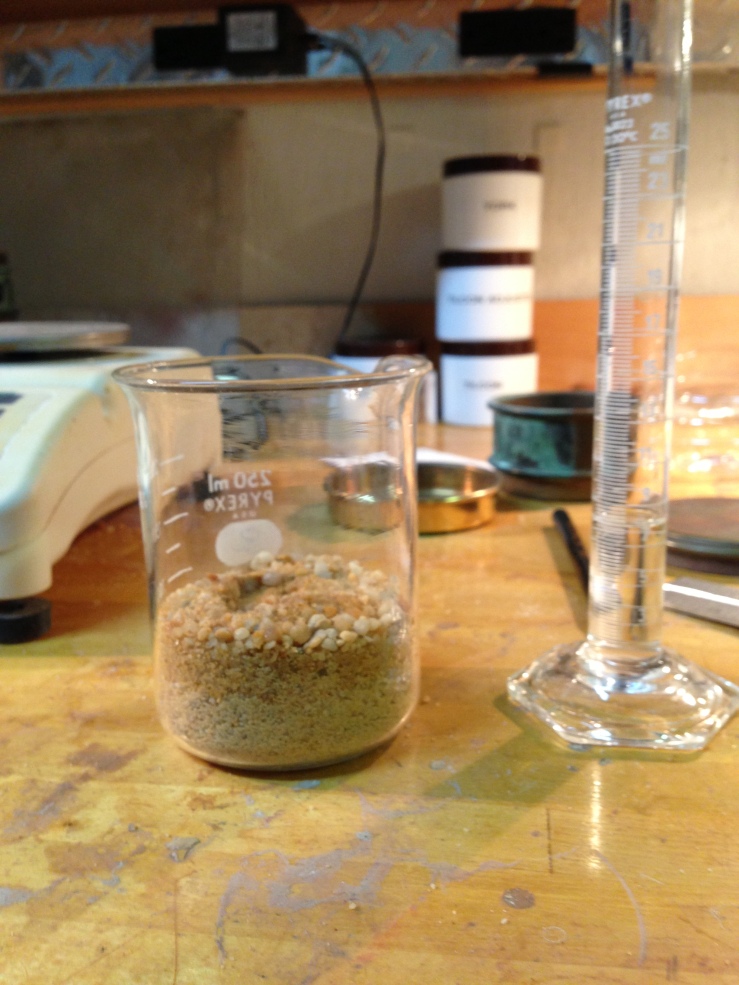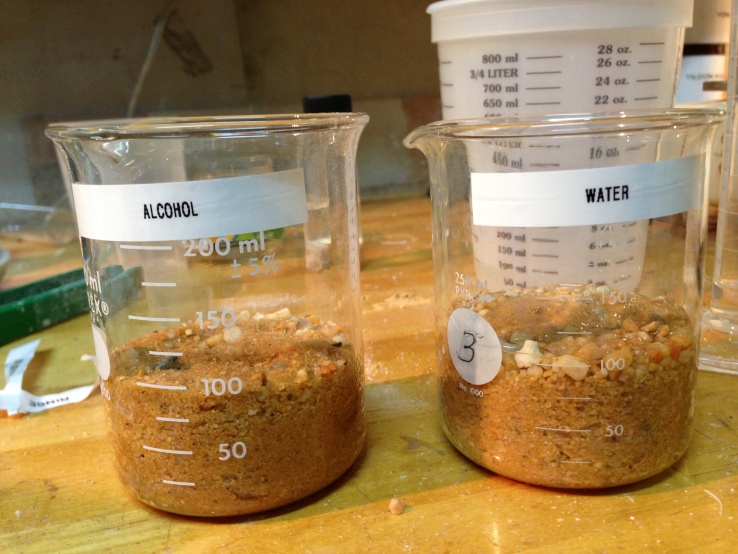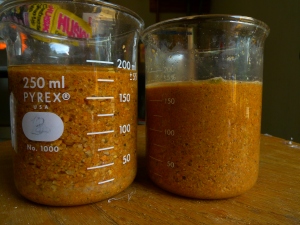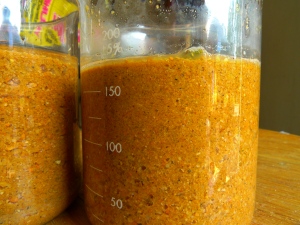In spite of industry standards and conventional wisdom, evidence suggests the need to carefully look at how sand to mortar ratios are derived to ensure accuracy and consistency on projects, especially when incorporating wet versus dry sand.
This topic builds on preceding posts. Consider reviewing those if you have not already.
First, some history/context:
As I continued reading the sand chapter in Bryan Higgins’ Experiments and Observations Made with the View of Improving the Art of Composing and Applying Calcareous Cements (1780), I came across this paragraph:
“When sand was poured into the glass cylinder until it was filled , and water was added before the sand was packed, by a slight agitation of the vessel the sand contracted in a much greater degree than is above expressed. Upon the whole it seemed that water, by poising the grains, facilitates their sliding on each other to fit well and fill the spaces.”
The first time I heard about a change in volume in wet versus dry sand was when Morgan Phillips asked me to read an article he was preparing titled A Source of Confusion About Mortar Formulas. The article was subtitled In order to prevent errors, more specificity is needed for proportioning and mixing mortars.
In this 1993 article, Morgan was discussing the problems of mixing mortar ingredients from dry measure and the differences in volumes between the dry and wet product. He states in the section Bulking of Sand: Another factor that can compound the problem:
“This is the increase in bulk volume of dry sand that occurs when water is added. If sand is measured dry, more actual sand is put into a mortar than if the same volume measure of damp sand is used.” *
Morgan conducted experiments with a particular sand and further along in the article he quoted instructions in ASTM C-270, section that states “when necessary, sand quantities should be adjusted to provide for the bulking of the sand.”
Following this is a table shows the formulas for sand as:
15 measures (dry) x 117% = 17.6 (measures damp) *

Back in the 90s I opted to switch to alcohol for measuring the void space in aggregates and have always stuck to that procedure when determining lime-to-sand ratios. My understanding then was that the surface tension of water might be affecting the sand bulking and alcohol would give a more accurate reading.
Recently I have questioned my practice of using alcohol instead of water and decided to conduct some experiments to see what I could learn. *As you’ll see below, my findings are the opposite of both Morgan and ASTM’s statements (starred above). Has a typo in the past just been repeated and magnified?
The basic idea behind determining the void space in a sand is to determine the ratio of lime needed to adequately bind the sand without pushing the sand grains apart. In other words, how to make the strongest possible mortar by optimizing the lime portion.
This void space determination is made by measuring the amount of liquid necessary to fully saturate dry sand without any excess moisture.
For the example used here, it took 34 ml of alcohol (200-proof ethanol) to fully wet 100 ml of dry sand. In other words, the air space surrounding the sand was 1/3rd the volume. This equates to a lime putty-to-sand ratio of 3-to-1.

But would that calculation change if I estimated the ratio with water instead of alcohol in this same sand?
I repeated this test with both alcohol and water several times with the same sand and the results were within 1 ml each time.
Seems like the alcohol versus water use doesn’t really matter that much, right? Well, maybe not so fast.
Next I filled two beakers to exactly 200 ml with sand from the same container. I added a measured amount of water to both, but stirred the sand in the beaker on the right. Then I tamped both beakers several times against the bench top.
The un-stirred sand decreased in volume from 200 ml to about 185ml while the stirred sand decreased to 175ml.
The difference in packing density is evident. Even more interesting is the difference in pore space based on the volume of water required to wet each sand.
The 185 ml un-stirred sand took 68 ml of water, while the stirred sand at 175 ml needed only 55 ml to wet out.
In the first case, I added water slowly until the sand was just wet, whereas in the latter case I poured in 100ml and then stirred it before pouring off the excess water, measuring what was removed.
The difference is obvious. The stirred sand has reorganized and efficiently packed the different sized particles. This caused the void space to decrease.
It seems to me we should be basing our lime to aggregate ratio on a well packed sand that represents the relationship of the particles in a cementitious environment (e.g. stirred as would occur in mortar mixing).
It is also interesting to note how dense the compaction was when the water was stirred. As you can see below, the unstirred sand would still take a fingerprint, whereas the stirred sand is so compact I could not make an imprint.

Think of any trip to the beach and the density of the sand as the tide moves out compared to that further up the shore, and none of this should be a surprise.
Another thing this experiment clarified for me is why my calculations over the years for the amount of stucco needed for a given area often falls short.
I have repeated this experiment with several different sands and gotten volume reductions between 12.5% and 17%. Since sand volume decreases when wet it is important to determine the percent shrinkage for the particular sand to be used.
For instance, if you needed 100 cubic feet of mortar (as measured from dry sand), then depending on the pore and void space in the sand your finished mortar could be as little as 83 cubic feet. If you (inadvisably) used crushed rock instead of a sand, it could produce as little as 75 cubic feet of mortar…and be structurally suspect.
Looking back at the crushed rock discussed in the previous post, I decided to see what would happen when it was wetted out. The result was quite shocking. There was a full 25% reduction in volume when water was added and stirred.
At some point I need to make mortar samples with pore space measured both by the stirred and unstirred method and set them aside to cure so that in a few months we would have some results from those samples in terms of strength. When I do those tests, I’ll also repeat these pore and void space measurements with water at room temperature versus that between 37 and 39°F (Zero at Celsius) when water is at it’s densest to see what affect — if any — it may have.



You must be logged in to post a comment.